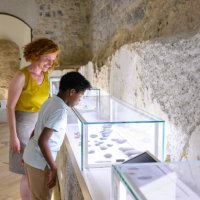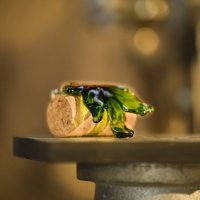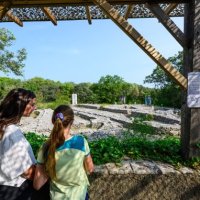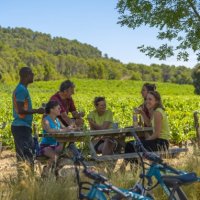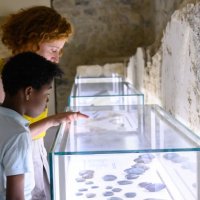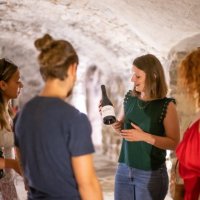The glassmakers' path
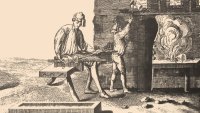
Legend has it that Saint Louis granted nobles ruined by the Crusades the right to practise the art and science of glassmaking.
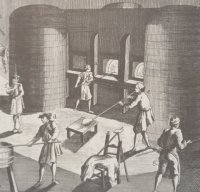
From the 13th century until the French Revolution, the Causse de l'Hortus was an ideal land for these "gentlemen glassmakers". The many oak forests of the time provided wood, which was used to fuel the kilns, producing the necessary energy. Lime from the limestone of the causse and silica from the river Hérault were used in the manufacture of glass. Trade routes were not far away, and products were transported as far as Sommières, on their way to Montpellier and the Mediterranean. The "Chemin des Verriers" (Glassmakers' Trail) now tells the story of this local know-how and its influence far beyond the original causse.
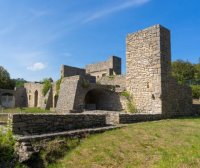
Numerous glassworks have been inventoried on the Causse de l'Hortus, a vast limestone plateau bounded to the south by the Hortus cliffs, to the north by the Pompignan plain, to the west by the London basin and to the east by the Claret and Valfaunès cliffs. The Couloubrines glassworks in Ferrières-les-Verreries is the only surviving evidence of this period. The objects made by the gentlemen glassmakers were of great finesse, and their talent was recognised as far away as Majorca. They produced bottles and various containers for winegrowers, perfumers and the Montpellier Faculty of Medicine.
But the business eventually collapsed. Massive deforestation, the repression of Protestantism, to which many of these nobles had converted, and the replacement of charcoal by coal*, which moved glassmaking closer to the coalfields, were just some of the reasons. The Revolution of 1789 abolished the privileges of gentlemen glassmakers, signaling their demise.
The glassmakers' path tells the story of an ancient skill, but also bears witness to an identity, a heritage. So take advantage of the paths that criss-cross the garrigue to discover more about this heritage. As you stroll along, you'll also come across other human stories that are told here. Some are very old, like those of prehistoric man, with the dolmens and the Rocher du Causse site. Others began in the Middle Ages with the charcoal burners who made charcoal in many different places. Not forgetting the more recent examples of shepherds who created lavognes, artificial pools designed to give their flocks something to drink.
(*): Charcoal, or the mineral commonly known as coal, is a sedimentary rock derived from the fossilisation of prehistoric plants.
To find out more
Mas Neuf & Rocher du Causse
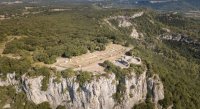
Perched on the heights of Lauret, the Mas Neuf is a vast estate teeming with paths and pages of history: Roman oppidum, traces of glassworks, pastoralism...
And the remains of a Chalcolithic village on the Rocher du Causse, which also offers an exceptional panoramic view.
Stop off at the Halle du Verre to see Guillaume Domise at work

In Claret, the Halle du Verre, housed in a former glassworks, presents the history and techniques of glassmaking from Antiquity to the present day.
It also houses a glassmaker's workshop. Guillaume Domise gives glass-blowing and glass-spinning demonstrations. This endearing and passionate figure demonstrates his talent and explains his technique and craft.
Guided tour of the Couloubrines glassworks
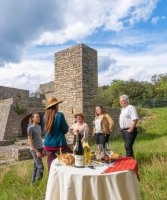
The Couloubrines glassworks remains the only restored testimony to the glassmaking past of the Causse de l'Hortus. "Léa tells you all about it" takes you on a guided tour to retrace its history. In June and October, you can take part in an event combining a tour and wine tasting with Vignobles et Découvertes.
Asphodel walk
(charcoal kilns and graves)
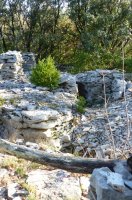
3.5km looping route - 1h30 - Very easy
Located between Claret and Ferrières-les-Verreries, the Mas de Baume, a former glassworks turned restaurant, is the starting point for this walk. This well-marked loop takes in the lush vegetation of the garrigue and allows you to follow in the footsteps of the people who once lived here.
Dry-stone walls, glassmakers' hideaways, lime kilns, charcoal-burning huts and dolmens bear witness to their presence here.

